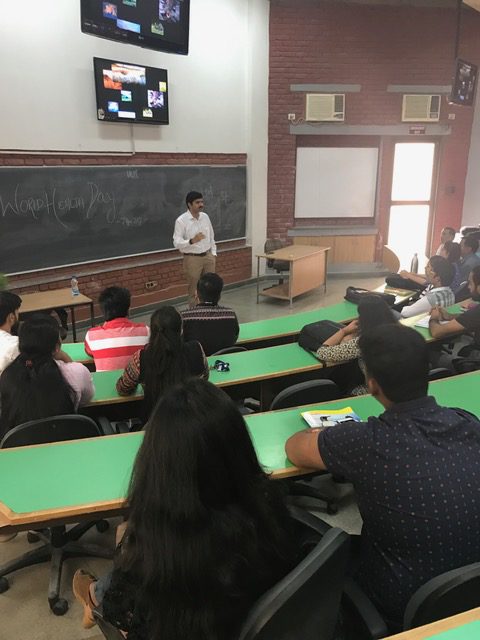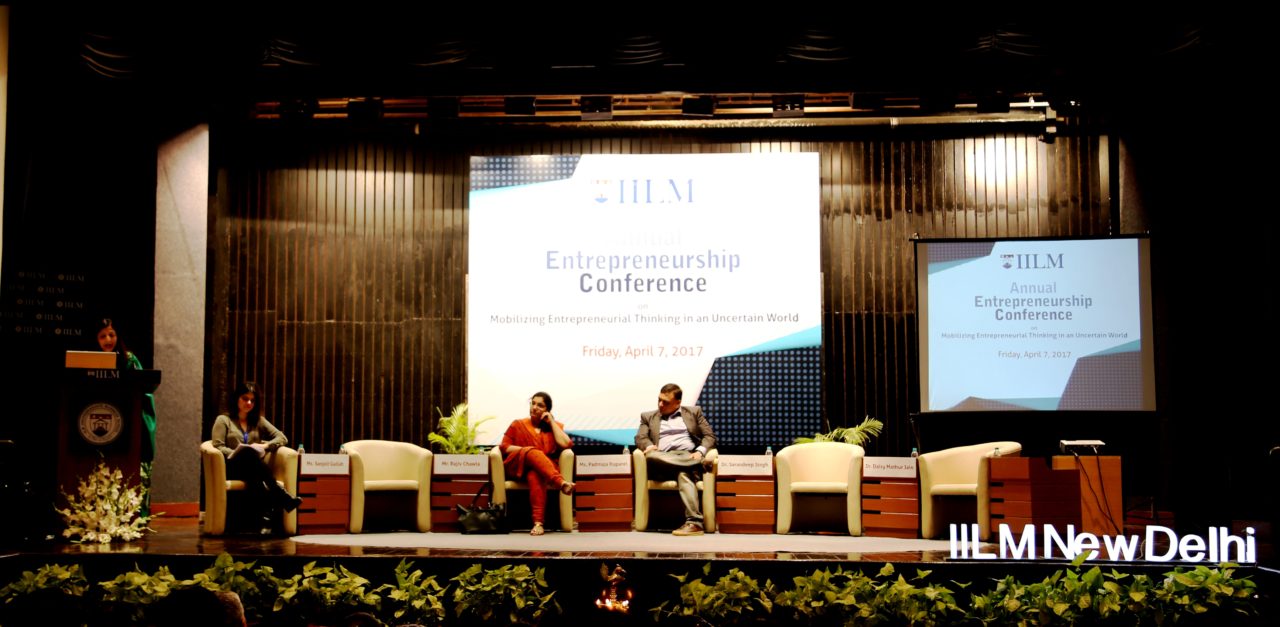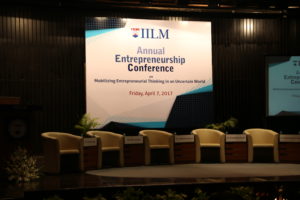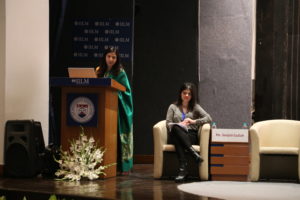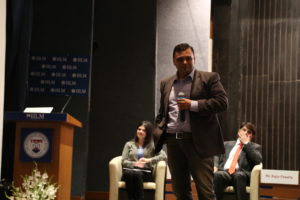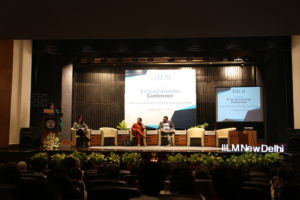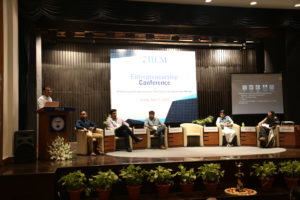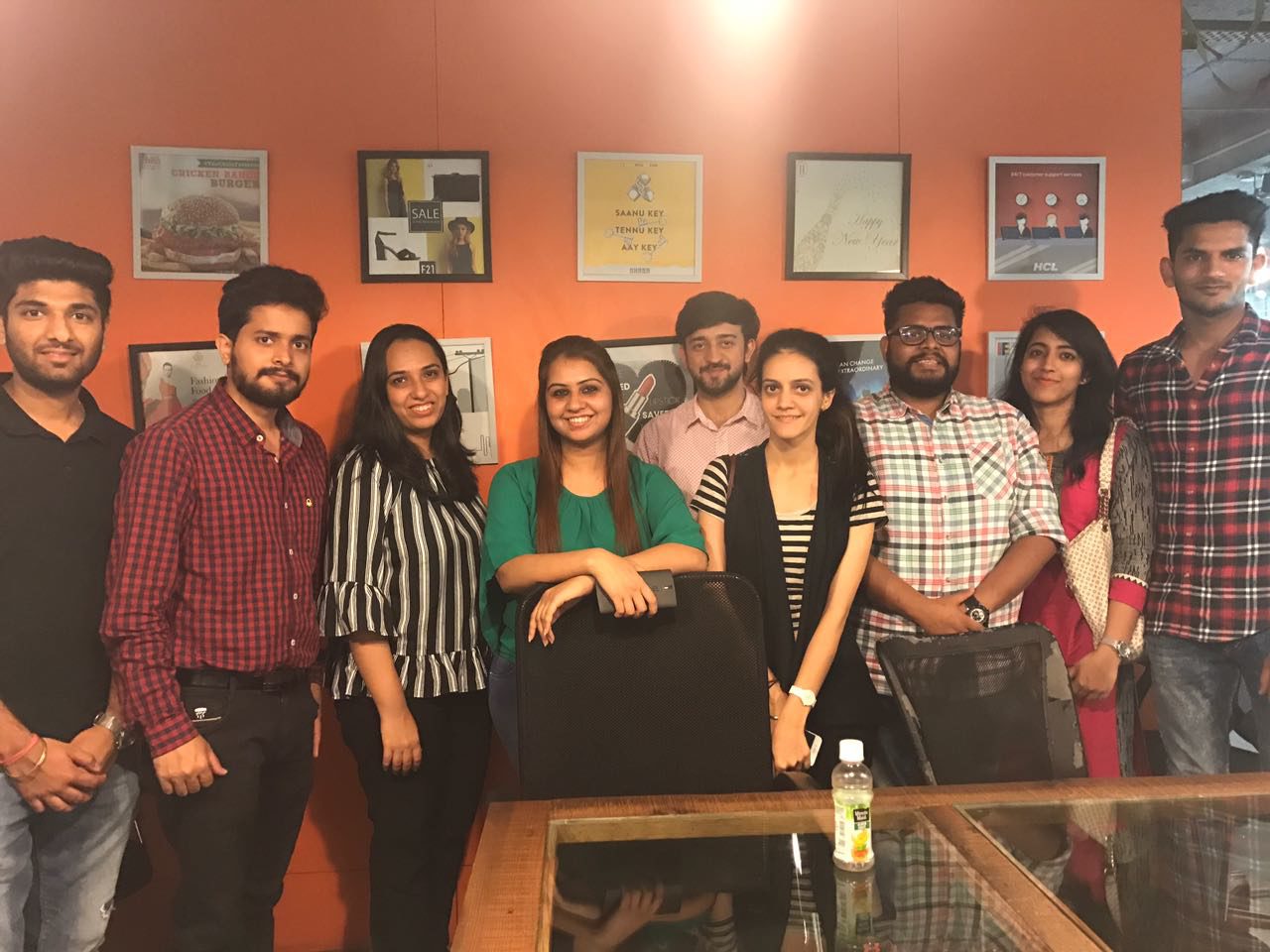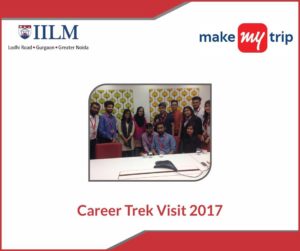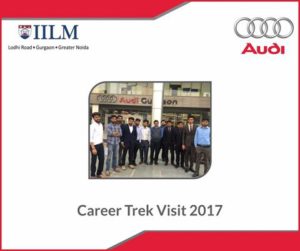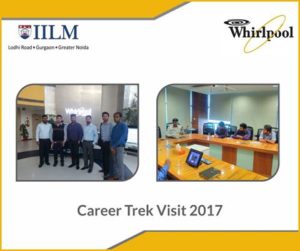The moment you step foot at IILM Lodhi Road, the process of shaping and molding you for the real world begins. From Day 1 itself, the focus is to get one ready to bag the best possible offer from industry bigwigs, at the end of two years when the PGDM program culminates. This is where a module like ‘Career-Trek’ comes into the picture, this course is different from conventional courses as it offers a practical industrial training. Students get to choose a sector of their choice (e.g., FMCG, Automobile, Advertising & Digital Media, E-Commerce, Manufacturing, Research, Financial Consulting, Real Estate etc.) understand well, and then explore an opportunity to interact with the industry personnel / functional heads to get a detailed idea about various job profiles being offered by the company/sector, competitors, status in market, functions, processes and other related information.
Having worked in the Advertising & Digital Media sector for almost two years, I had it absolutely clear in my mind what my choice of industry was going to be. Now the next step, was getting hold of a few industry personnel who would be willing to share their knowledge and experience with us students, this was easier said than done. Now you see personnel in the Advertising & Digital Media sector are notorious for a complete disregard of everything apart from work; in a nutshell they live and breathe the work that they do. Hence convincing them (more conning them than anything else) to take out some precious time for us students was an uphill trek in itself. But finally, I and members of my career trek group managed to fix up not one, not two, but four industry visits. Let me now take you through each of these four industrial visits:
1.DDB Mudra : The DDB Mudra Group, a part of the Omnicom/DDB Worldwide Group, is India’s largest integrated marketing communications and services network. DDB Mudra Group comprises three agency networks and six specialist agencies and eleven strategic business units which offer their expertise under four disciplines (Media, OOH, Retail and Experiential).
DDB Mudra Group is one of India’s most awarded agencies picking up numerous awards at top national and international award festivals including Cannes, Spikes Asia, Clio, Adfest, ABBYs, OAA (Outdoor Advertising Awards), PMAA – Dragons of Asia (Promotion Marketing Awards of Asia) and WOW (Experiential Awards). Their long and illustrious list of clients include Emirates, Hindustan Unilever, PepsiCo, Times of India, UNICEF, Volkswagen and many more.
At DDB’s Gurugram office we met Mr. Kabir Sen, who is a Senior Partner-Client Lead; he gave us a light hearted outlook into the world of advertising. He also spoke about how advertising has evolved over the years and is now playing catch-up to Digital Media; but at the same time he pointed out that a lot yet has to be done to bring Digital Media to the masses in the tier 3, tier 4 and rural areas of India.

Students at DDB Mudra with Mr. Kabir Sen, Senior Partner-Client Lead
2. MRM//McCann : is a leading Customer Experience Agency that puts people first. This philosophy guides their approach to creating moments that matter to both people and brands. Through data infused insights and engaging creative that is enabled through technology, they build seamless, connected experiences that result in profitable relationships. The agency is part of the Interpublic Group and a lead agency in the McCann Worldgroup network, with 40+ offices across North America, Latin America, Europe, the Middle East and Asia-Pacific.MRM//McCann has been ranked among the top 10 digital agencies in the world by size, according to Adweek, MediaPost, and RECMA. Their areas of specialization are Digital Marketing, Direct Marketing, Advertising, CRM, Data & Analytics, and Creative Technology.
At MRM//McCann’s New Delhi office, we met Ms. Nidhi Sharma, Group Account Manager for Lufthansa Airlines, & Ms. Rangoli Mehrotra, Manager-Digital Planning for Lufthansa Airlines. They were extremely gracious hosts and showed us around the premises while at the same time introducing and giving us a brief about every department including strategy, designing, creatives, etc. This helped all my fellow career trek group member better understand the functional departments that each agency has, and also helped decide the department they would like to work in the near future.

Students at MRM//McCann with Ms. Rangoli Mehrotra, Social Media-Team Lead for Lufthansa Airlines
3. Foolish : is a highly creative, strategically-focused, independent advertising agency in New Delhi. These guys are passionate about creating big ideas for big and small, but ambitious clients. Big ideas that go beyond single executions and act as a platform for one strong campaign after another.Foolish is structured around a passionate, multi-disciplinary team of individuals infused with free spirit, curious minds and restless souls. As a diverse group, each member brings different skills. From spectacular campaigns in TV, print and radio to striking brand identity makeovers, effective direct mail to point of purchase. Whatever the challenge or creative channel, these guys have an unprecedented record for turning brands around and generating outrageous business results.Their long and illustrious list of clients includes Adobe, Café Coffee Day, Xerox, Goodyear and many more.
At Foolish’s Gurugram office we were welcomed by Ms. Gagan Arora – Corporate Head, who gave us a brief overview of how newer players like Foolish are taking the fight to industry stalwarts like DDB & Ogilvy, and on many occasions coming up on top. She also gave us valuable insights on what a recruiter looks for in a potential hire, and also focused on the qualities that are necessary to do well in the Advertising & Digital Media industry. We also had a brief discussion on how Demonetisation affected ad-spends from a client’s perspective and how agencies worked around this temporary inconvenience.
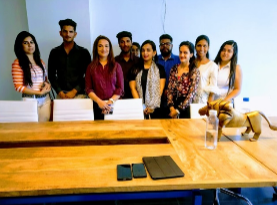
Students at Foolish with Ms. Gagan Arora – Corporate Head
4. Rep India : These guys are the new kids on the block and consist of an army of creative thinkers, who spend a disproportionate amount of their time on digital. They have a young team from diverse backgrounds with a common motive of building brands through their use of the digital economy, and that is what makes them tick.The range of services that Rep India offer include branding & identity design, web design & development, social media management, Online Reputation Management, SEO, etc.
They have an impressive portfolio of clients like GAP, Burger King, Air Asia, KittySu, and even IILM.
We spent a better part of the evening having an informal chat with Ms. Preeti Kaur – Head HR & Operations, about the finer nuances of working in an Advertising & Digital Media agency. She gave us a complete overview of the role each functional department in an agency plays, and how at the end of a day it’s the duty of an Account Manager to manage all these departments to the best of his/her abilities to ensure timely execution of Client Campaigns.
She also introduced us to one member from each department including Strategy, Design, and Account Management, who then told us individually about the kind of work that happens in each of these departments. This was by far the most comprehensive overview of the Advertising & Digital Media industry.
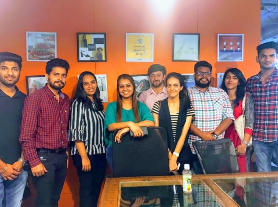
Students at Rep India with Ms. Preeti Kaur – Head HR & Operations
All in all it was an extremely fun, yet informative series of industrial visits and helped pique each and every student’s interest in the Advertising & Digital Media sector. Also, the one message that we all got from the agencies we visited was, no matter how big or small, old or new the agency might be; only a person who is truly passionate and creative about his/her work can make it big in this industry, and no one else.
And for me, it just cemented my belief that Advertising & Digital Media is the industry I really belong to and nothing will change that fact for me, ever. Now can’t wait to graduate from IILM and get back to business.
By Aditya Ray
IILM PGDM 2016-18

